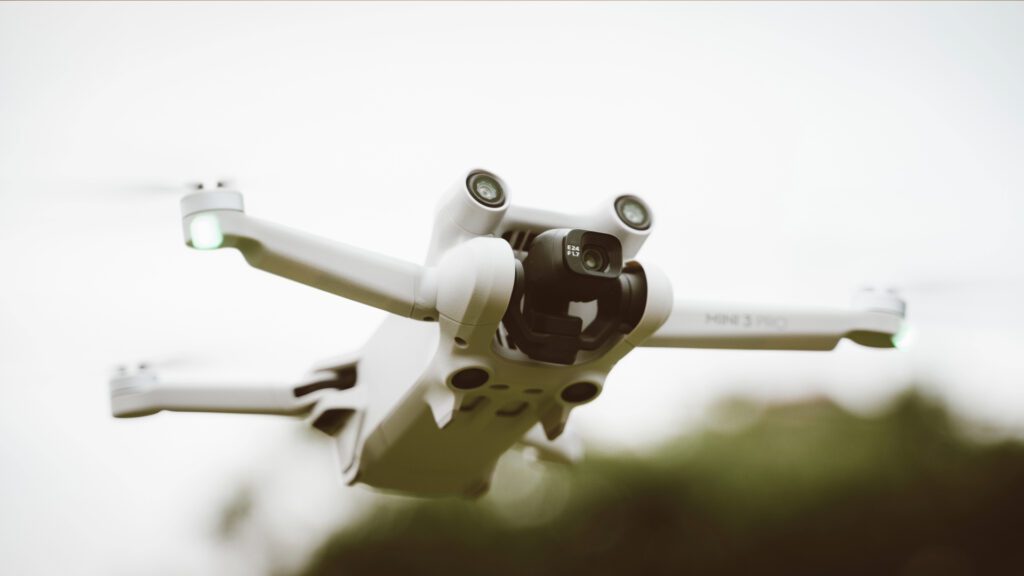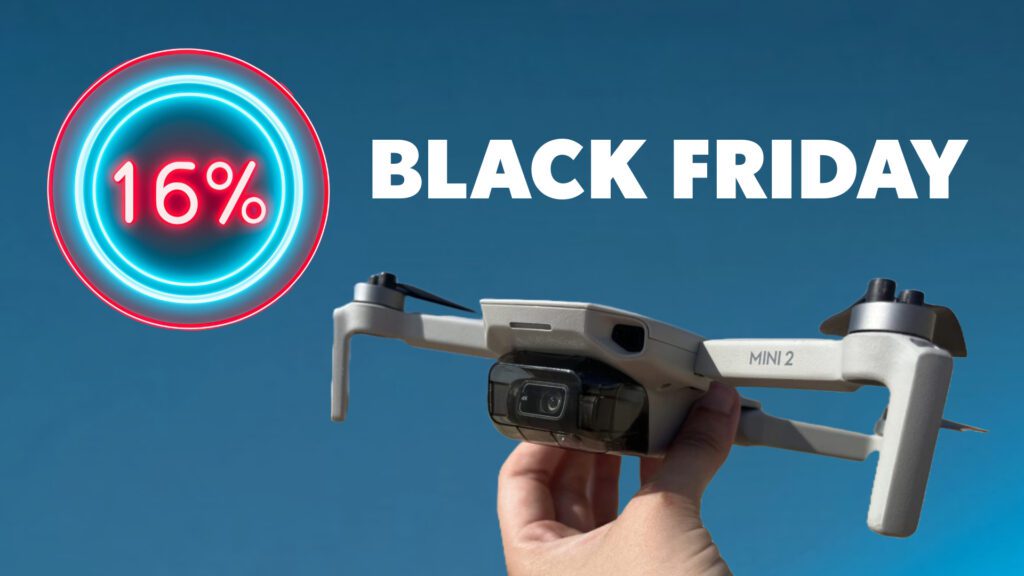As more and more people are taking up drones as a hobby or professionally, the proper drone maintenance and care of drones should be understood to ensure their longevity and optimal performance.
In this guide, we’ll cover conducting regular pre-flight checks and proper aftercare, to flying and landing techniques.
Give your drone its longest life!
Understanding Your Drone
Before we delve into drone maintenance, it’s important to familiarise yourself with all parts and equipment of your drone. Generally speaking, we will run through care of the propellers, motors, battery, camera, and the drone’s body.
Pre-Flight Checklist
A pre-flight checklist ensures the safety and performance of your drone. Make a habit of running through these steps before every flight.
Battery Health
Check the battery’s charge level and inspect for any physical damage. Ensure that it is securely installed in the drone.
DJI batteries operate best when charged to 60-80% charge and should not be used in the drone within one hour of being charged.
Replace batteries if they show signs of wear or degradation.
Check battery maintenance below to know how to store your drone batteries.
Propeller Inspection
Check the propellers for any cracks or chips. Damaged or unbalanced propellers can lead to unstable flights and potential accidents. Most drones come with spare propellors as replacements.
Firmware Update
Regularly update your drone’s firmware to benefit from performance improvements and bug fixes. Manufacturers release updates to improve user experience and address safety concerns.
For DJI drones, load up the DJI Fly app on your smartphone as this will notify you of any software updates available for the app or the drone. Make sure to have your drone turned on at the ready to update its firmware through the app.
You can check for any updates in the settings section of the DJI Fly app.
Try to do this the night before your flight to avoid any technical issues.
Calibration
Calibrate your drone’s compass and gyroscope, following the manufacturer’s instructions. Proper calibration is crucial for accurate flight control and stable hovering.
Weather Conditions
Check the weather forecast before each flight. Avoid flying in strong winds or rain as adverse weather conditions can damage your drone. Most drones are not waterproof and any droplets that find their way into the interior could impact your drone’s function.
Different drone models have different levels of wind resistance, with lighter models such as the DJI Mini range generally having lower wind resistance. So, make sure you know the wind speed before attempting flight and your drone’s capabilities.
Additionally, keep an eye on hot weather conditions. High temperatures can cause the drone’s battery to heat up, leading to potential overheating issues and malfunction.
Cleaning and Drone Maintenance
To ensure your drone’s proper functioning, regular cleaning and maintenance checks are essential. Here’s some information on cleaning and maintaining care of your drone’s parts.
Exterior Cleaning
Use a soft microfibre cloth or a brush to gently clean the exterior of your drone, including the body and propellers. Wet wipes tend to work well to get off general dirt.
Avoid using harsh chemicals, as they may damage the drone’s finish.
Lens Cleaning
If your drone is equipped with a camera, use a lens cleaning kit to remove any smudges or dust particles from the lens. A clean lens will guarantee sharp and clear images.
Make sure when not using the drone that the gimbal protector is always on. This minimises the amount of dust that can build up on the drone’s lens along with preventing any accidental scratches. Also, clean any lens filters (such as ND filters) that you use for the drone in the same way as these can also be prone to dust.
Motor Care
Inspect the drone’s motors for any debris or hair dust. Gently remove any obstructions to prevent strain on the motors during flight.
Battery Care
Store your drone’s battery in a cool, dry place away from direct sunlight. If you don’t plan to use the drone for an extended period, partially charge the battery to around 50% before storing it.
Batteries for DJI drones are Intelligent Flight Batteries and are not designed to be kept at 100%, nor to be stored in the drone. These batteries regularly self-discharge, which is why they may feel warm if you haven’t used them in a while. This is normal.
They should be stored outside of the drone and charging hub to maintain their longevity.
Storage
When not in use, store your drone in a protective case to shield it from dust, moisture, and potential damage.
If you use your drone regularly, it’s probably without question that you have some sort of carry case or bag for it. Make sure this is kept out of direct sunlight and in a cool area.
Check out the common mistakes most beginner drone pilots make.
Flying Tips for Longevity
Adopting proper flying techniques can impact the lifespan of your drone.
Smooth Take-offs and Landings
Ensure smooth take-offs and landings to prevent sudden jolts that might damage delicate components.
Make sure not to take off on unstable terrain that could cause your drone to shift or slant during take-off. Avoid grassy terrains in case the propellers make contact.
You can also consider investing in a drone landing pad for safe take-off especially on uneven surfaces.
These are our top picks for the best landing pads on the market:
Heavy duty landing pad for drone take-off and landing support on uneven surfaces. Its heavy duty material and provided pegs mean this pad will be secure in strong weather. Easily foldable and portable.
Weighted drone landing pad that provides stability in a range of windy weather conditions. A mat that will ensure a safe and reliable take-off and landing spot for your drone. Double-sided for lighter and darker applications.
Avoid Overexertion
Avoid pushing your drone beyond its capabilities, such as flying in strong winds or at excessive speeds. Overexertion can strain the motors and reduce battery life.
Sometimes wind breezes can’t be avoided when flying over water, but it’s something to be aware of and not to overdo.
Read what you need to know before flying your drone over water.
Controlled Descents
When descending, control the rate to prevent hard landings that could damage the landing gear.
Try using the carrying case or a landing pad to ensure the drone lands safely.
If you are on unsuitable surfaces such as long grass or a rocky area, try to master the art of catching your drone by hand.
This will become invaluable if any situation you are in with your drone (and it looks cool doing it).
Troubleshooting
Despite careful maintenance, issues may arise with your drone. Here are some common problems and troubleshooting tips.
Drifting
If your drone drifts during flight, recalibrate the compass and check for any magnetic interference in the area.
If this continues, land your drone in a safe area and check for any problems with the motor or propellors.
Unresponsive Controls
Check the connection between your remote controller and the drone. Check whether the GPS signal has been lost and try to get closer to your drone’s location if possible. Also, ensure that the remote’s batteries are functioning correctly. Reset the power of the drone and remote if needs be.
Erratic Flight
Calibrate your gyroscope and ensure the drone’s firmware is up-to-date to rectify erratic flight behaviour.
Check the manufacturer’s manual if you continue to have technical issues with your drone.
Conclusion
In conclusion, proper drone Maintenance and care are paramount to ensuring your drone’s longevity and optimal performance. By understanding the components, conducting a pre-flight checklist, and adopting best practices during flight, you can keep your drone in top condition for years to come.
Remember, a well-maintained drone is not only safe but will make capturing footage an easy and smooth process.
Check out tips and tricks to capture stunning videos with your drone.
FAQs: Drone Maintenance and Care Tips
How should I store my DJI batteries?
DJI batteries should be stored outside of the drone and of the charging hub. These intelligent flight batteries auto-discharge which means they maintain themselves. However, to do so effectively, they cannot be kept inside a container. Instead, keep your batteries stored away in your drone case in a cool place, away from sunlight.
How can I clean my drone?
To clean your drone and propellors, use a brush or a microfibre cloth to wipe off any dirt or debris. If you are dampening the cloth to wipe the drone, make sure to dry the drone and propellors immediately after with a microfibre cloth as this will prevent any water leaking into the interior of the drone, and any external wet marks.
How do I check the health of my DJI battery?
By logging into the DJI Fly app and turning on your drone with the selected battery inside, you can go to Settings and check the health of your battery.
Log onto the DJI Fly App. On the camera screen: Go to Settings > Safety > Battery.
A DJI battery tends to last around 2-3 years (or 100 cycles). After this time, consider swapping your battery for a newer one.






